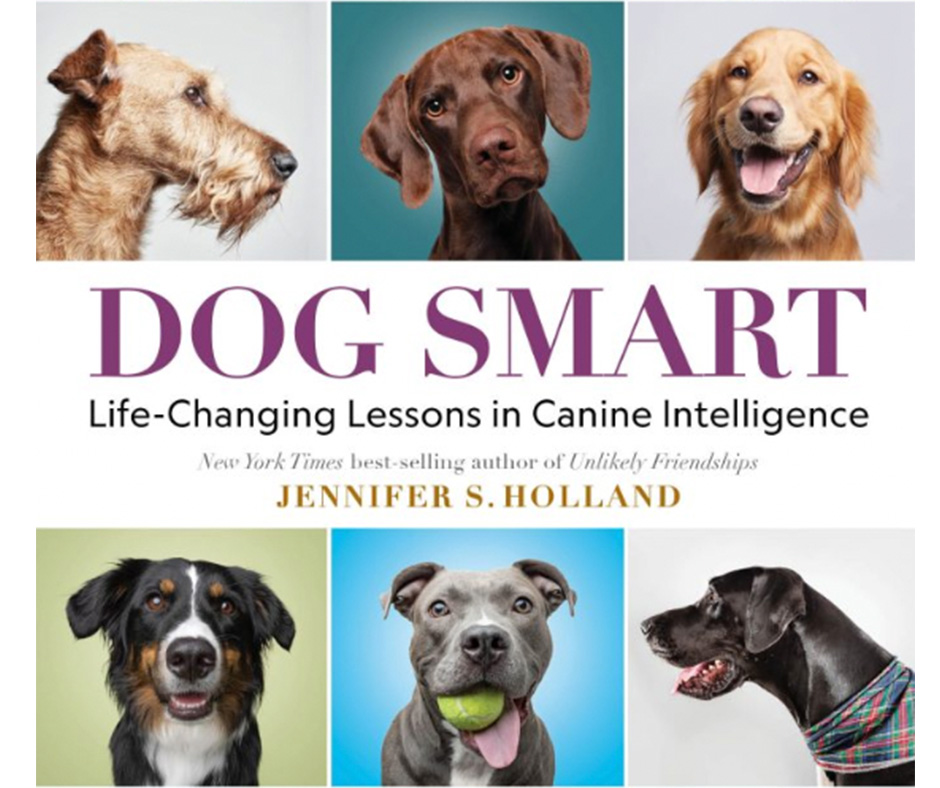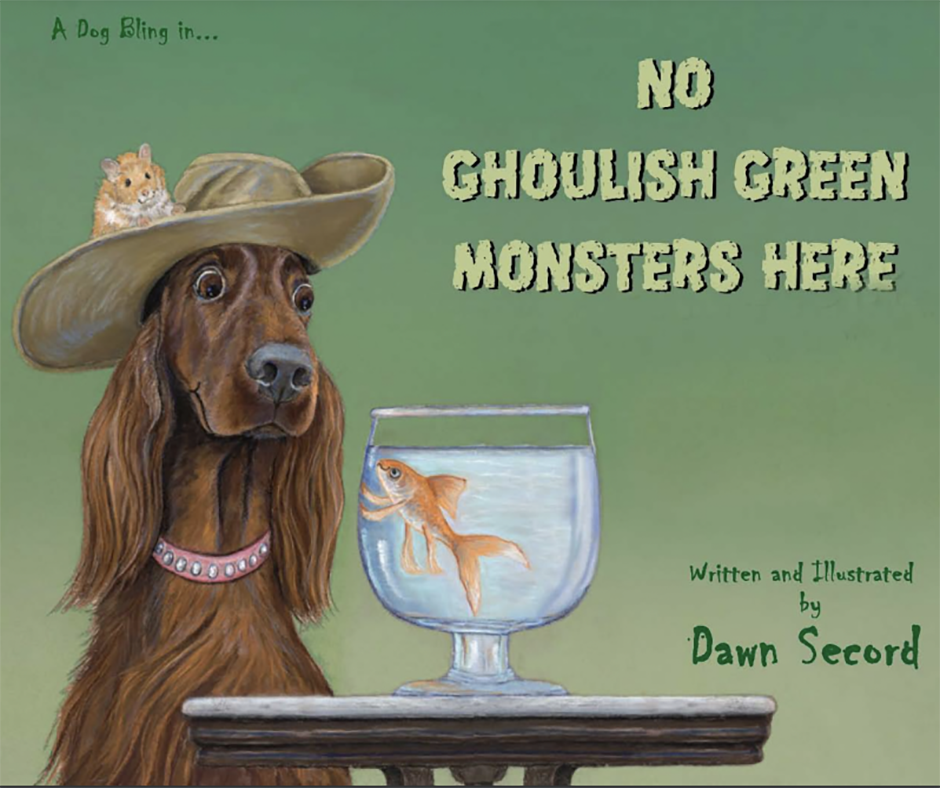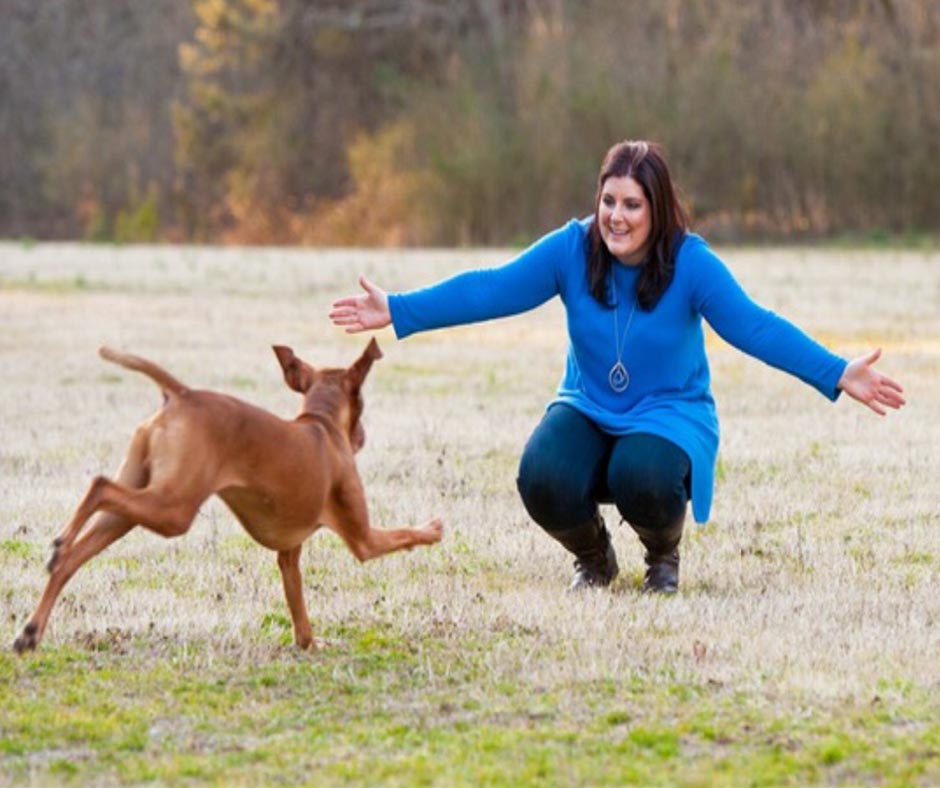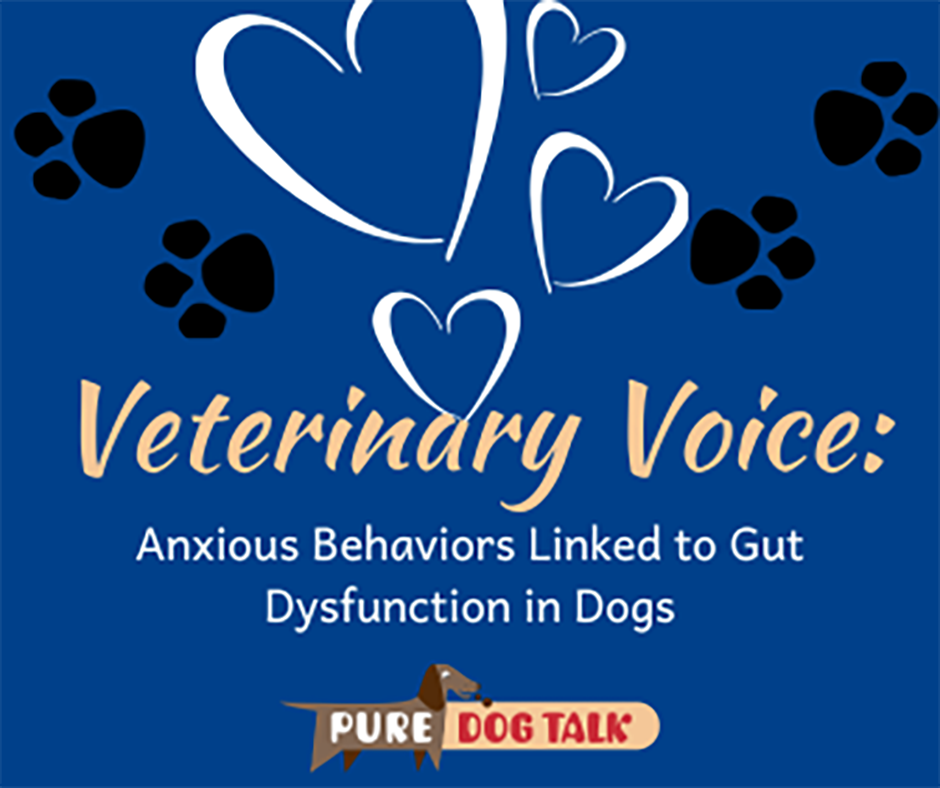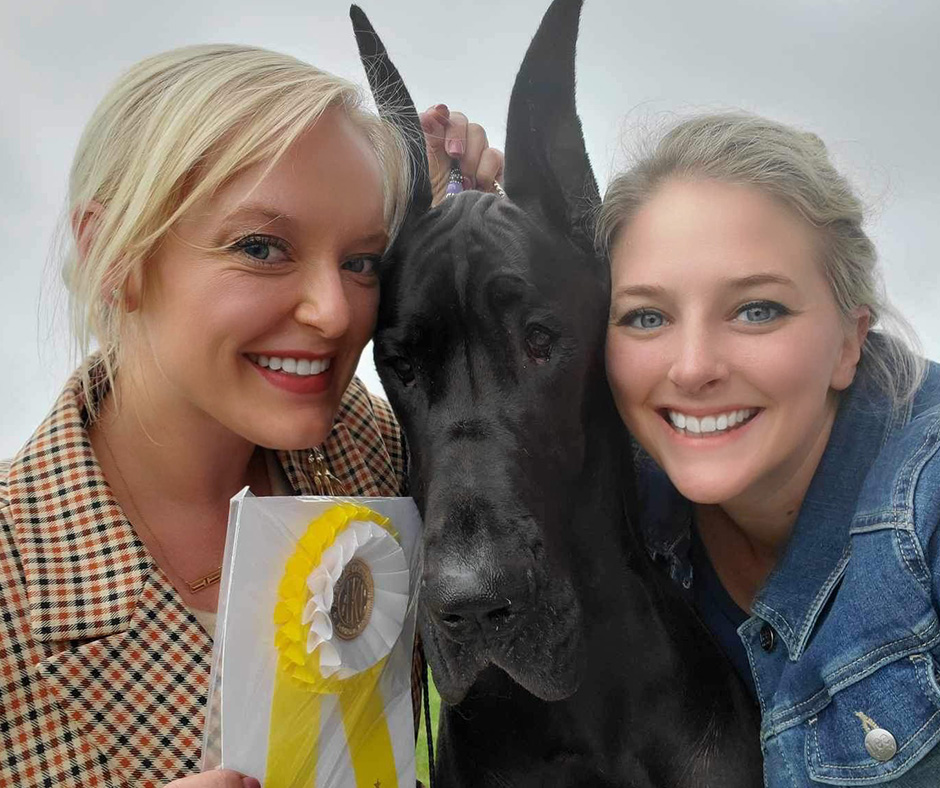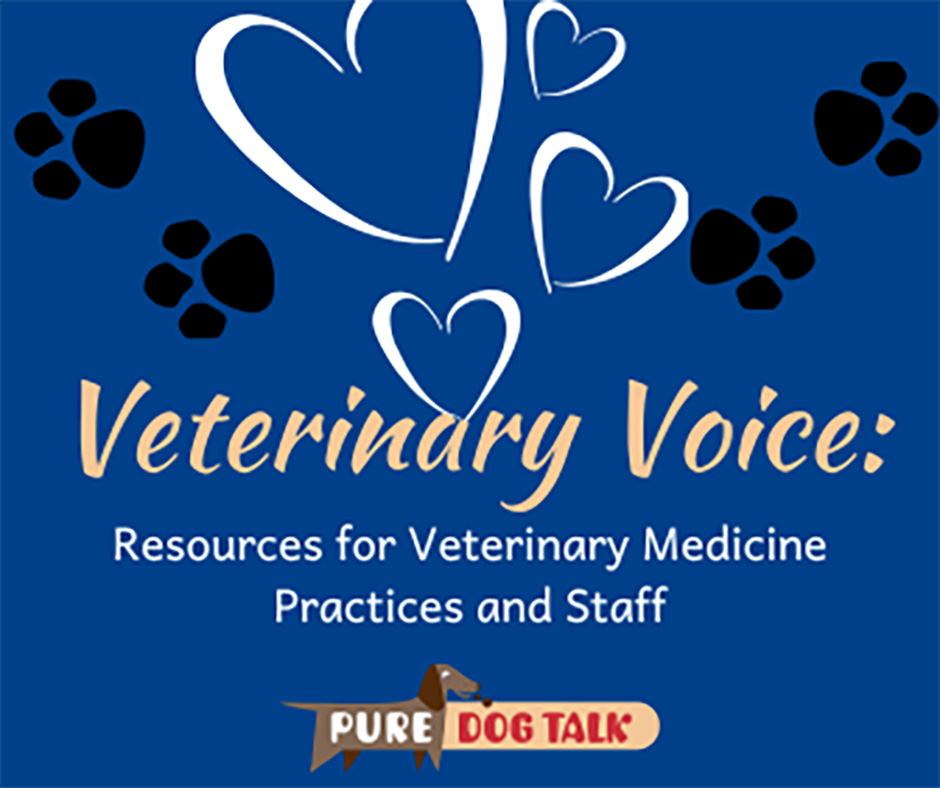Posts by Laura Reeves
667 — 2025 Kick Off and Looking for Potential
2025 Kick Off and Looking for Potential
As 2024 draws to a close, we’re left, as usual, staring into the abyss of a new year… upheaval nationally, internationally and even in our tadpole pond of purebred dogs has left all of us off balance at some level.
Poised precariously here on my rickety soap box, I hope you’ll join me on a journey of retrospection, through a few glimmers of hope and on to a couple new year’s resolutions.
Eight years ago this month, the first Pure Dog Talk episodes dropped just in time for the AKC National Championship shows. I racked up 10s of thousands of steps dropping flyers on every grooming table, interviewing treasures of our sport and gathering support for this novel way of sharing 20th century knowledge in a 21st century way.
Pure Dog Talk was the very first podcast dedicated to purebred dogs. Today we have a couple million downloads and have reached nearly 400 thousand listeners globally. Several major corporate sponsors and a couple hundred Patrons keep the lights on and the mp3s rolling so that YOU can stay on top of news, interviews, reviews, events and ideas.
We’ve shown up in the AKC Gazette (shoutout and thanks to the Gazette crew!) I just found myself quoted in a TikTok posted to a Reddit “millennials” thread fgs… I love hearing from all of you all the time. About how Pure Dog Talk “saved your life” or made it better or saved your dog’s life. PS We’ve added a page to the website where you can upload your stories complete with photos! Check it out on the Testimonials tab at pure dog talk dot com.
If you’d be so kind, indulge me while I take this opportunity for some shameless promotion. If you find Pure Dog Talk has helped you or someone you know, please consider joining our paid Patrons. This funding covers only overhead – website, audio editing and more – not me personally. When I launched the Patrons in 2018, I was paying for the podcast out of my pocket and eating a lot of peanut butter sandwiches.
A lot has changed since then (although, I still eat a lot of pb&j). The crowdsourced funds from Patrons of the show have enabled the growth and professionalization of the website, continued the outstanding production values of the pod and made us able to keep growing this resource to reach new audiences.
Your Patrons membership adds value to the pod by initiating you into a devoted community of purebred dog enthusiasts including judges, handlers, owner handlers, newbies and master breeders. Patrons only After Dark gatherings each month let us hash out problems, share ideas, stand in community with one another and gain knowledge.
Visit https://puredogtalk.com/patron/ and select your Patron Package. You can join us for as little as $10/month or save 10% with an annual Patron membership. Come on over and join the best community in dogs.
Aaaaaand, Starting Jan. 3, our new Patrons Only pod, Unleashed, delivers “let your hair down” episodes on all the hot takes in purebred dogs. Mailbag topics, commentary and insight with your favorite guests. In our first episode of the new show, Amanda Kelly joins me with thoughts on “How Not to be a D*ck at the Dog Show”…. Patrons, BOLO an email with access deets!~
And, speaking of new stuff…..
We’re SUPER excited to announce that, after EIGHT years in the podcast universe, Pure Dog Talk is spinning off a new pod for you, your puppy buyers, and your sister-in-law’s cousin’s boyfriend.
Marty and I bring our own special brand of pet knowledge to the larger pet-loving public in The Marty & Laura Show, launching Jan. 1, 2025.
We are thrilled to share these unique, fun, fact-based conversations about pet health. From pro tips on selecting your new dog to what your cat’s cough means and what you should do about it, we’ll meet you wherever you are (in the car, on the treadmill, walking the dog) and bring you a good laugh, a great story and a bright idea every week.
Now that you’re all caught up on the Pure Dog Talk news, let’s get planning for the incoming year. Many, if not most of you, are driving right now, on your way to Palm Springs or Chicago, St. Paul or West Springfield or some other dog event entirely.
In just over a month we’ll all be converging on Manhattan and Madison Square Garden for the triumphant return of Westminster Kennel Club to the City (and ps benching!). Reminder! Join us Wednesday, January 8, 5pm pacific for our LIVE@5 podcast with Dr. Don giving us all the final to dos and 411s for the show.
Before you know it, the time will come to decide on Louisville or Crufts (or both if you’re slightly crazy). The spring nationals will kick off and then the summer death march circuits and before you know it, it’s back to school, fall national season and the AKC National Championship again… The way dog people organize our lives leaves those outside the tribe baffled and somewhat horrified.
How many of us have planned weddings, honeymoons and family vacations around the show or event calendar? Raise your hand. Come on, you know you have… I did, more than once! Have I ever told you the story of getting married on a Saturday and leaving Sunday with my client and my step-mother for the Clumber national? I mean, that’s professional level crazy right there… ;-/ (I might add that is now an EX husband… huh, go figure….)
One thing I’m going to offer as a suggestion as we all get ready to hop back on the crazy train…. Life is short, super expensive and often incredibly frustrating all by itself. Adding a hobby like ours to it can exaggerate how short, expensive and frustrating it is.
When, not if, you find yourself starting to snap – at friends or dogs or family – it’s probably a good time to take a little break. Maybe go play a different sport for a couple months. Maybe breed a litter and stay home huffing puppy breath for a while. Maybe just curl up with the dogs and loved ones and binge netflix for a weekend… I promise, life will not come to a screeching halt and your mental health will improve exponentially.
My second tidbit of advice is: money doesn’t grow on trees. Spend it wisely. Most of all, spend it on a good dog. If you are new to the sport and having a hard time in your search for just such a rare gem, you’ve come to the right place!
Giving you the tools, knowledge and community to succeed is literally why Pure Dog Talk exists.
My final nugget of insight for today is this. Be happy. Like literally, there’s a song about it and everything. Be happy with your dog. be happy for other people. be happy you enjoy the freedom, financial security and physical well being to participate in dog sports. Being mad about losing a 10 cent ribbon is the firstest of the first world problems I can imagine. We are literally not curing cancer or solving world peace here folks.
It’s been a few years since I trotted out the Pure Dog Talk 12-step program to a happier you in the dog world, so I’ll include a link to the full episode in the show notes. But a brief recap will not go amiss this year.
These steps apply to our dog world specifically, but can be generalized to daily life without much trouble in three simple rules. Just be nice. Get off your bleeping phone. Learn new things.
The 12 steps include a recommendation for each month of the year like offering congratulations and meaning it, watching and learning about other breeds, helping and volunteering, making new friends and more. Take a listen. This plan is proven to bring enhanced enjoyment, satisfaction, curiosity, knowledge, camaraderie and success to anyone’s dog show calendar.
In closing, I love this quote from Ellen Goodman
“We spend January 1st walking through our lives, room by room, drawing up a list of work to be done, cracks to be patched. Maybe this year, to balance the list, we ought to walk through the rooms of our lives … not looking for flaws but for potential.”
Just like judging the whole dog instead of fault judging, consider making 2025 the year you find the beauty in yourself, and in everyone else’s dog…..
Peace …
665 – Research Shows How Dogs are Affected by Human Emotion
Research Shows How Dogs are Affected by Human Emotion
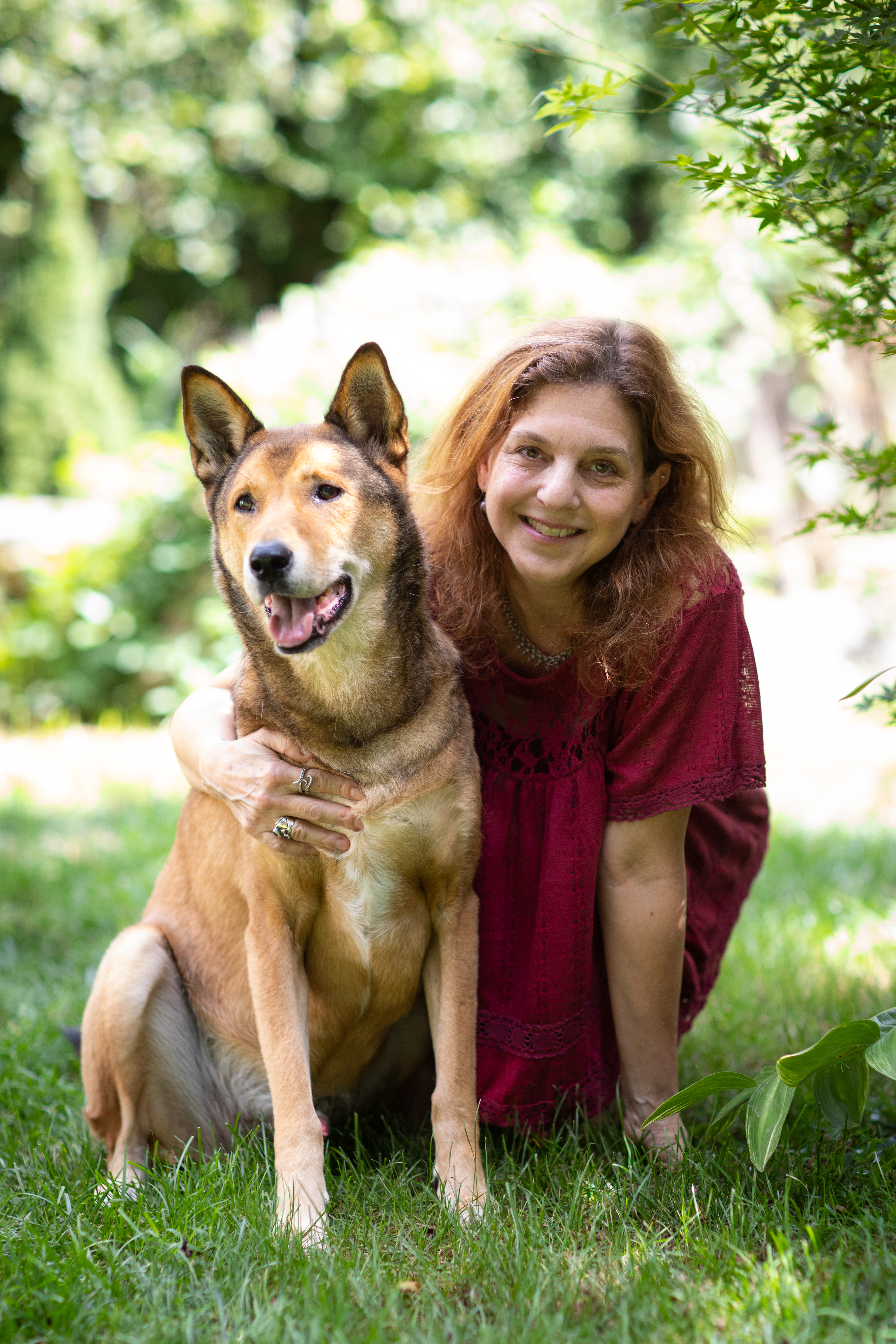
Author Jennifer Holland with her dog.
Author Jennifer Holland joins host Laura Reeves to discuss her new book “Dog Smart: Life-Changing Lessons in Canine Intelligence.” This cutting-edge science narrative, chock-full of heartwarming case studies, is one woman’s quest to learn the true meaning of dog intelligence and how they are affected by human emotion.
Holland interviews trainers and handlers of various working dogs doing their jobs. She was led by a seeing eye dog through the streets of Manhattan and took a sleeve hit in a protection dog training demo.
“I have some video of it,” Holland said, “and my head just sort of flops around like a rag doll. And the dog did not want to let go. It took a little while to actually pry him off of me and I got a good bruise.
“But again, what I was trying to think about was how you train this animal that, here we’ve, you know, raised them to be sweet and loving animals. I was told training them to bite a person is a really hard thing to do because they don’t necessarily want to do that.
“And so it has to be a game. It has to be a game for them. The sleeve is a sleeve. It’s not a person and then to be able to train them to stop if they’re in mid bite. And here they’re getting that thrill and you have to tell them no, the bad guy has waved the white flag. It was remarkable to me that dog can stop and have that self control.”
Laura commented that the part of the book that really jumped out at her was research showing that puppies who were given unhappy or negative sweat smell grew up to be unhappy negative puppies. And the ones that were given a happy sweat smell grew into well-adjusted, happy dogs.
“(Dogs) are just so affected by us in that way,” Holland added. “Just the importance of our level of stress or for them the feeling that we’re feeling good is important to how they respond and how they behave. It just shows that incredible kind of co-evolution that’s happened and that bond that we have that really I think makes (dogs) particularly special.”
664 – No Ghoulish Green Monsters Here
No Ghoulish Green Monsters Here
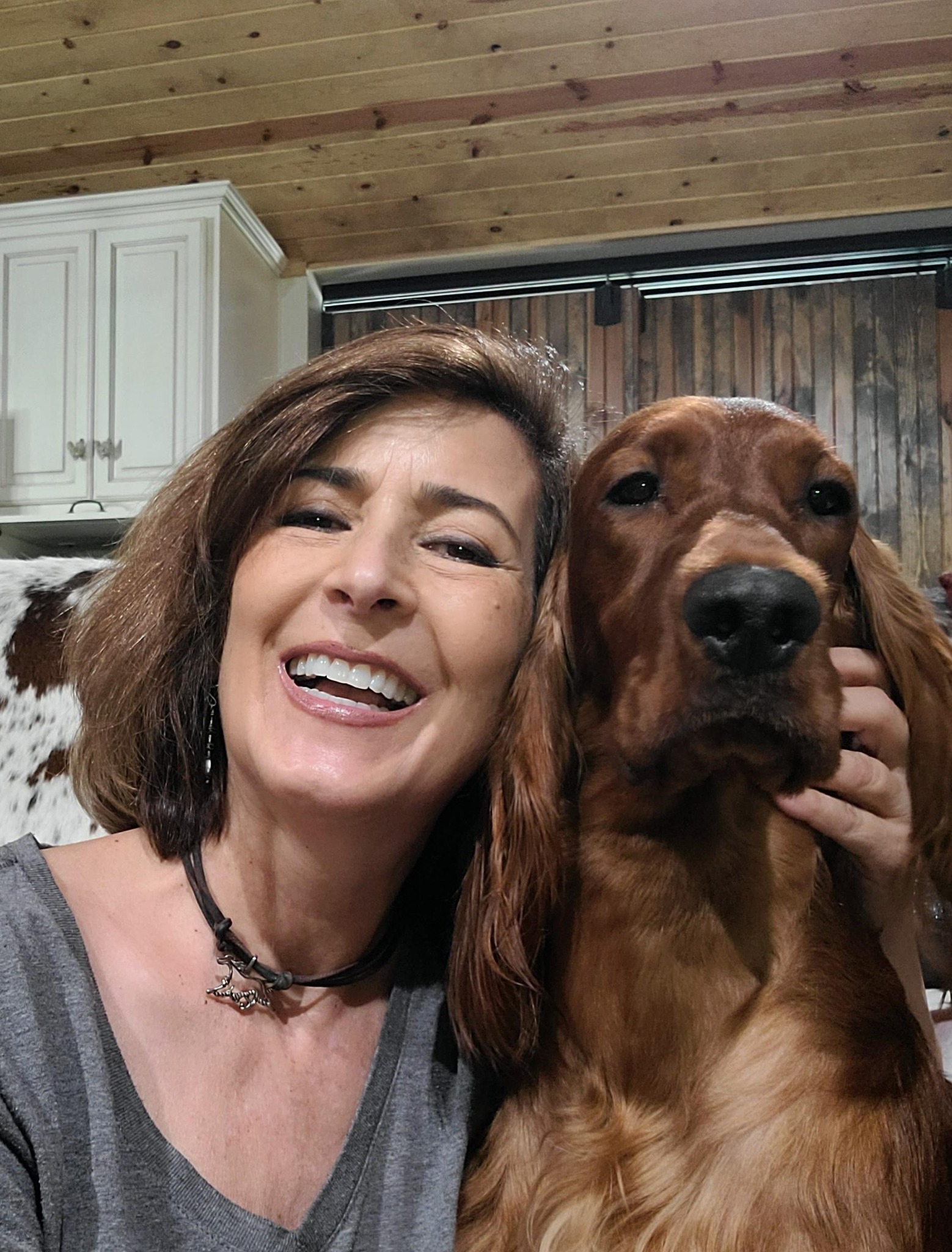 Author Dawn Secord joins host Laura Reeves to discuss the release of her new book “No Ghoulish Green Monsters Here.”
Author Dawn Secord joins host Laura Reeves to discuss the release of her new book “No Ghoulish Green Monsters Here.”
Secord describes a lifetime in dogs, her time with Irish Setters and her childhood starting with Milk Bone snacks.
“Combining my love of art and writing and looking back on being a child with so many kids not acclimated with dogs and not realizing what a wonderful opportunity it is to find companionship,” Secord said. “Find security and to use words to make the kids feel safe. And so in 1984 it was laid on my heart when I got my first Irish Setter that I was going to do a book about an Irish setter for children and share my love of my dogs.
“I want to give parents, grandparents, aunts, uncles and nieces, whomever, a book to sit down and talk about dogs and talk about their fears. This first book has messages about facing fears because everybody’s afraid of something. And I wanted kids to know it’s OK to be afraid and talk about it. Don’t be afraid by yourself.
“The book comes with a free download that’s on my website. So if they want to make it into an educational tool, it’s got a glossary and it talks about Irish Setters. I even made maps for kids to learn how to read a map and some pictures and coloring book pages for the little ones, some things to research for the older ones. So I really wanted parents or adults, whoever they are, they have an opportunity to turn the book into an educational opportunity if they desired.
“I really want to promote that having a purebred dog is cool. So that’s one thing. For the writing, I feel that it’s timeless and I want to make an impact.”
663 – Show Safe Team Wants to Make a Difference
Show Safe Team Wants to Make a Difference
Board members of the Show Safe organization join host Laura Reeves to discuss the grassroots development of an organization that supports a safe dog event environment.
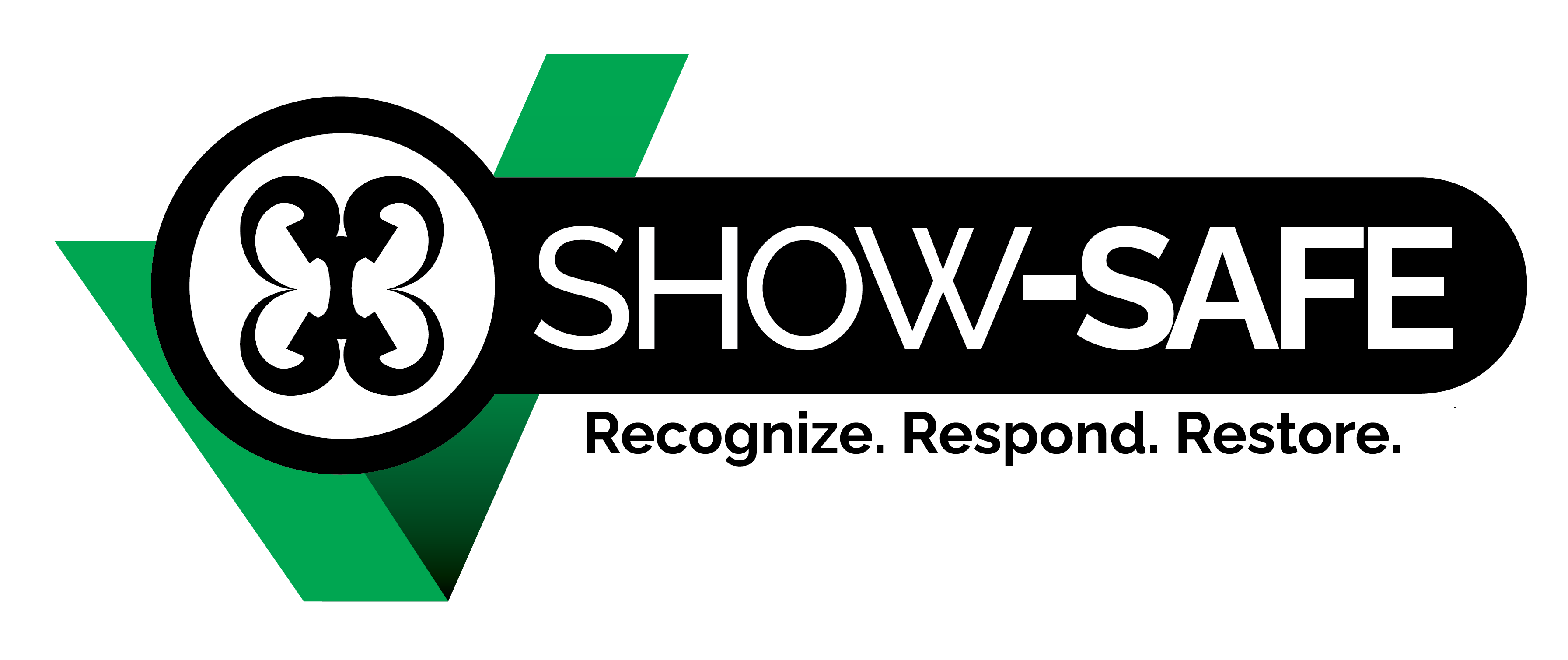 “I think there were several of us that felt, you know, we’re just frustrated because you wanna do something, you know, everyone wants to do something to make a difference,” said Show Safe Secretary Lindsay Fetters. “I think it was very easy to throw blame and throw the responsibility on other parties. And you know, something needs to happen, but it’s somebody else’s problem.
“I think there were several of us that felt, you know, we’re just frustrated because you wanna do something, you know, everyone wants to do something to make a difference,” said Show Safe Secretary Lindsay Fetters. “I think it was very easy to throw blame and throw the responsibility on other parties. And you know, something needs to happen, but it’s somebody else’s problem.
“I think we all can agree that we really wanted to focus on education. We wanted to promote recognizing issues. We wanted to be able to respond to issues. We wanted to be able to restore things once we knew there was an issue.
“We all put our egos aside. And, you know, we come from such a variety of backgrounds. You know, you have all ages, you have all interests, you have all levels of involvement in our sport, and so we were able to really look at what strengths does everyone bring to the table and kind of align that with what we need to get done and kind of run with it. And that’s exactly what we’ve done.”
“It’s about boots on the ground,” said Show Safe Executive Director Diane Moore. “It’s about raising the money and the awareness and the energy to actually accomplish something. Like Lindsey said, everybody wants to do something. They want to make the world a better place. But to take that into tangible steps, this board has done a phenomenal job. So we essentially have 4 initiatives and those four initiatives, the first one is education.
“It’s also going to be outreach and workshops. It’s going to be education for clubs, for juniors, for people who report on the sport or on abuse and neglect, just all of those things where we can educate and just say, hey, look, these are these dynamics and this is how you recognize it. You know, our tagline is recognized, respond and restore.”
The team also has created a toll-free number (1-888-474-9723) to call for immediate response staffed with someone who is trained to listen and trained to “say what’s going on, what’s your concern and to assess what you need to create safety.”
“Our aftercare program is really about, OK, so something has happened, something has happened to you and you are part of the dog show community and you need some support,” Moore added. “So it’s not right now, it’s not immediate response. It’s not like you’re unsafe right now. It’s historical mostly but it’s impactful, it’s impacting you, it’s still with you and so we’re going to be there to say ‘OK, what resources do you need?’ How do we help navigate this resource world and ultimately be able to assist you in paying for … mental health resources and survival resources and how do we bring that to you in a way that is you are in control.”
“I’m second generation, so I grew up in this sport,” said Show Safe Director Jason Hoke. “Many of us have grown up with our parents and even our grandparents taking us to the dog show, leaving us in x-pens alone. We grew up feeling like everybody in this sport is our family and that everything is safe and in the majority of it, it really is. But what we want to do is be able to teach people things that can protect and educate other parents, other youth other elders to recognize where shortcomings are in dog shows in show locations, in areas within the show.”
662 – Anxious Behaviors Linked to Gut Dysfunction in Dogs
Anxious Behaviors Linked to Gut Dysfunction in Dogs
Dr. Jason Gagne, board certified veterinary nutritionist, joins host Laura Reeves for a deep dive into dog food feeding trials, anxious behaviors linked to gut dysfunction and more.
“It’s one thing to open up the AAFCO book,” Gagne said. “The Association of American Feed Control Officials who set this model bill, as it’s termed and says you need this much zinc, you need this much selenium and so forth. Then pet food company XYZ, whoever that may be, goes ahead and puts that much in or hopefully a little bit more to meet those requirements.
“It’s another thing to actually be the company (Purina) that does these feeding trials. Again, as I mentioned before, we’re obtaining these ingredients, we’re formulating our diets. We have very tight control over our ingredients specifications and have very high standards for who our suppliers are. But it’s another thing to then take that diet that you make and feed it out to a colony of dogs and we do do that and we’re proud of that.
“The purpose of doing that and having that colony is to feed these diets. Because when we do that, we can measure the digestibility of our diets. We can assess the fecal quality and the fecal score, which I think is important to a lot of breeders and sporting enthusiasts. And we can even assess the performance on the diet.
“It’s not just important to meet the AAFCO requirements, but it’s more important really to optimize those recommendations for the betterment of the dog, right? We put those diets out there on the market after we’ve assessed, hey, we put this in the diet, we want to make sure it’s actually in the diet. We can analyze the diet itself, but then again, we’re analyzing what’s going in and coming out of the dog as well.
“This microbiome, what else is it doing? It’s actually been linked to behavioral issues as well when it goes out of whack, that dysbiosis as you mentioned earlier.
“We actually did do a study with dogs displaying anxious behaviors, and paired it with physiologic as well, so salivary, cortisol and we also had Holter monitors on them for heart rate. We were able to show that when the dogs were being supplemented with the bl999, they (had) a decrease in barking, jumping, spinning and pacing, which was anxious behaviors that they were displaying, versus when they were on the placebo.”
661 – GRRRL Power Team Carries Forward Longo Great Dane Legacy
GRRRL Power Team Carries Forward Longo Great Dane Legacy
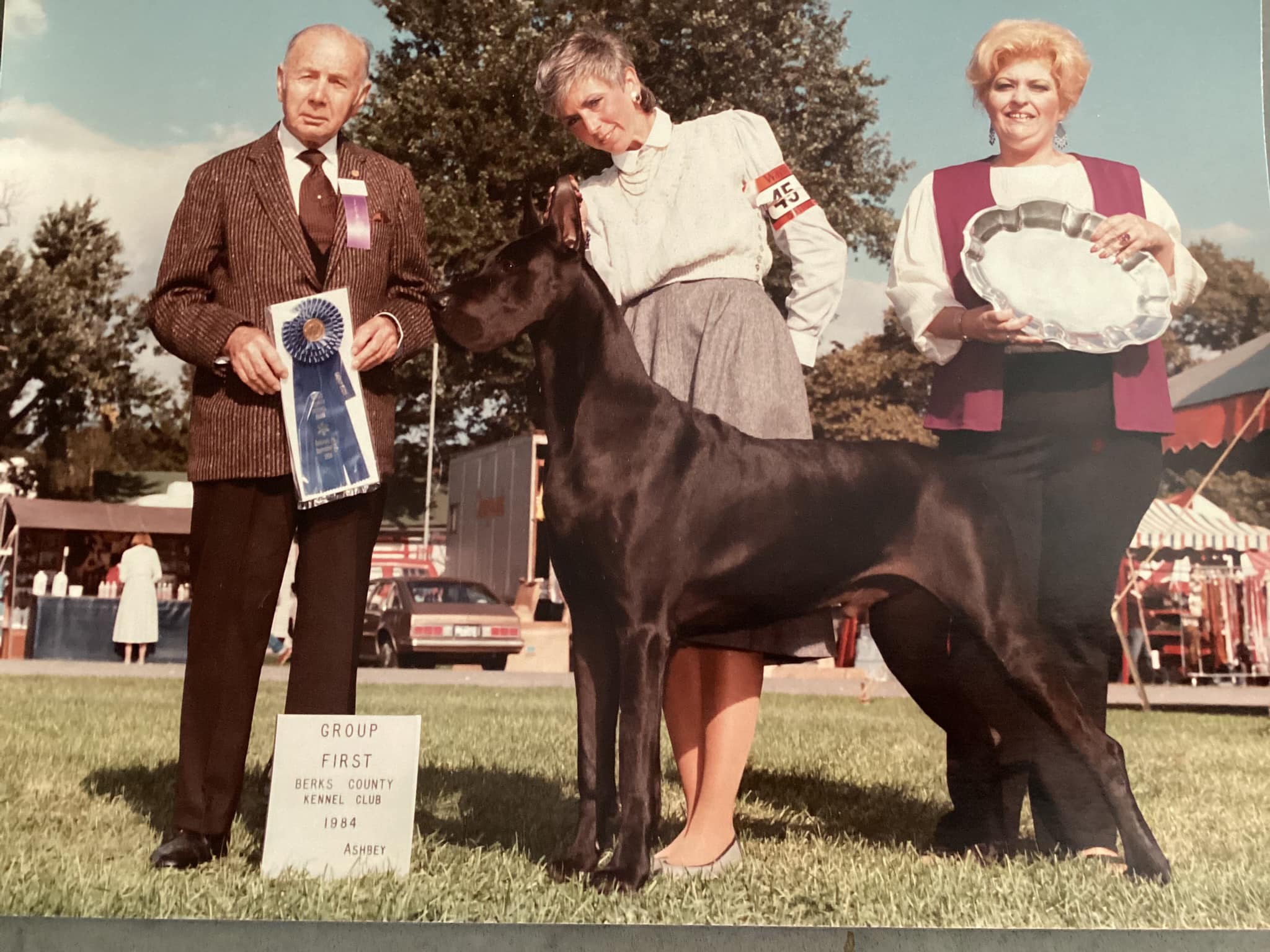
Carol Grossman became synonymous with black Great Danes and the Longo dogs.
Host Laura Reeves is joined by Carol Grossman, Jackie Van Delft and Tristen Lawrence with a tribute to Tootie Longo, who passed away in May of this year, and the Longo Great Dane legacy.
Grossman, the “Queen of Great Danes,” piloted dogs for Longo for decades, including legendary greats like the second Black in Breed history to win an All Breed Best In Show, BIS BISS Ch. Longo’s Chief Joseph. She shares her memory of Tootie Longo this way:
“As much of an icon as she was, she never really thought of herself as an icon, whereas Joey (Vergnetti) and Peter (Green) were icons. She didn’t realize they felt that way about her. That was Tootie. She just was not assertive about who she was. And she didn’t realize, I think, until the end, how famous she really was, that she carried a legacy of dogs through the years. She knew she had beautiful dogs and she knew she had a great line and she knew that she was lucky in picking dogs, but she never really realized what an icon she was.”
Van Delft is the more recent member of the group, a Great Dane enthusiast who had wanted a Dane since childhood. She sought out Tootie Longo to acquire a dog, and wound up as a “member of the family.”
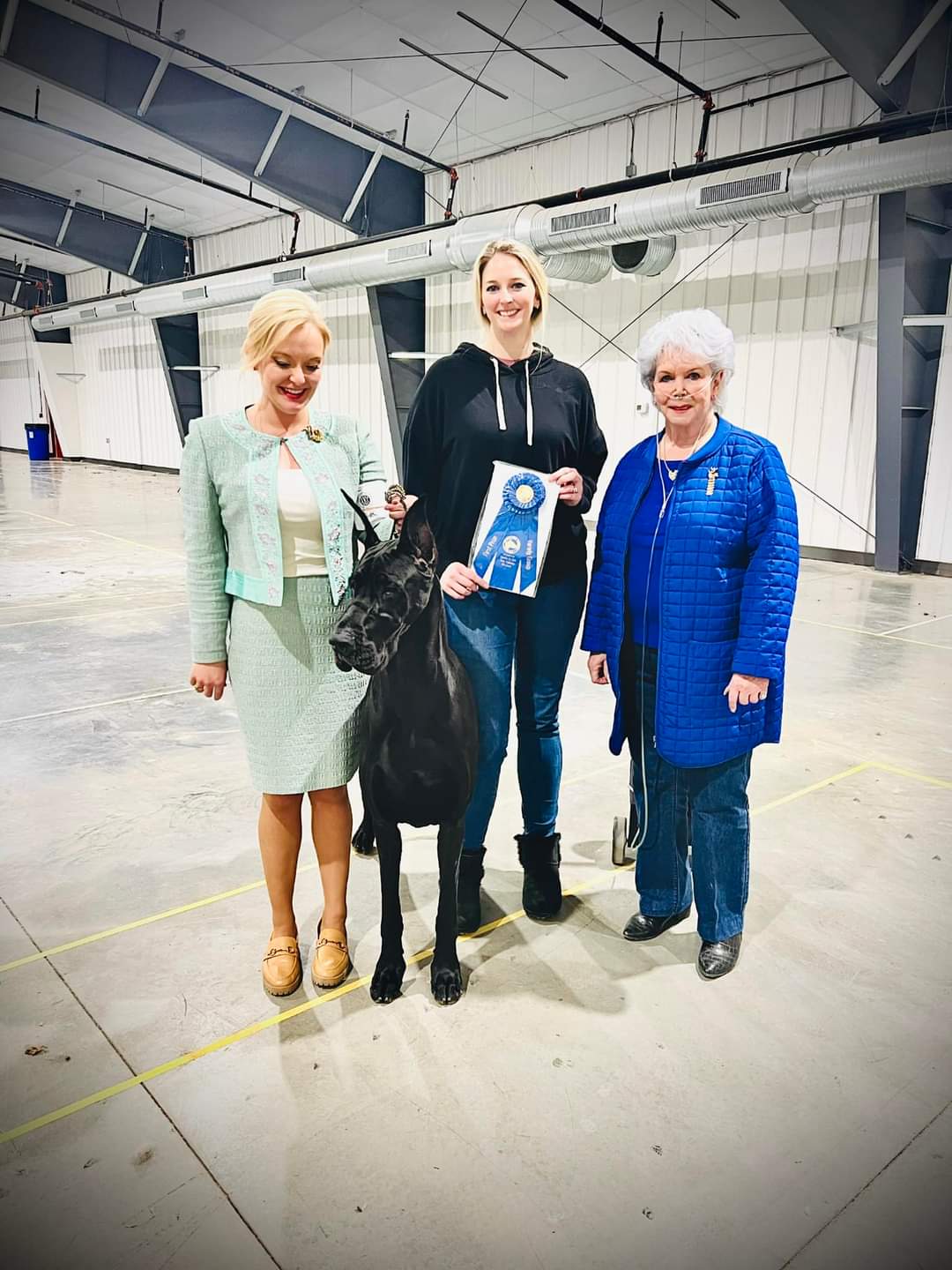
Jynx with (from left to right) Tristen Lawrence, Jackie Van Delft and Tootie Longo.
“Tootie pretty much took us under her wing,” Van Delft said. “We became really good friends… I got my first Longo puppy and he was amazing. He was my heart dog. But we would go to the Longos every weekend to twice a month. We were very lucky we only lived 45 minutes away from them. So we spent a lot of time and we got to go to all the shows together. And, you know, she just became a part of the family or I became part of hers, you know, and it’s just that was it. She wasn’t getting rid of me.”
Grossman and Van Delft were instrumental in selecting Lawrence, a third generation Great Dane exhibitor, to campaign Jynx, one of the last of Tootie’s dogs, to 36 specialty wins.
“I’m a Great Dane handler my whole life,” Lawrence said. “My parents and both of their parents on both sides were very active in the breed as breeders as well as handlers. So there’s never been a time that I didn’t do this. I remember Tootie Longo as long as I’ve been alive. And so growing up, knowing the power and what she built in our sport, it was incredible and for her to come to me and say ‘we want you to show our dog,’ I can’t describe how proud I was, how incredible that was to me.”
660 – Peacock Feet and Finding Breed Type in Toy Dogs
Peacock Feet and Finding Breed Type in Toy Dogs
Dale Martenson, breeder of Touche Japanese Chin, joins host Laura Reeves for an enlightening discussion of breed type in toy dogs. He encourages judges, exhibitors and breeders to focus on the critical details of beauty and not get hung up in fault judging.
“I hear people talking about either how they judged a group of dogs or breeders when they’re evaluating their puppies and all they’re talking about is the faults,” Martenson said, “and (all I can think is they’re looking at a) beautiful flock of Peacocks and all they see is a bunch of ugly feet and crooked toes running at them. They’re missing the point of this breed and all of the work that goes into the details that make these breeds so hard to raise and so intricate and so desirable.
“I think the biggest insult somebody can give you is that you were generic because there’s nothing about the toy dogs that’s generic. And we have a whole lot of very breed specific type that you have to get into and start pulling apart.
“If you’re cute enough, somebody will bring you food … they do not need to get their own food.
“These toy breeds have very specific things in each of them that you can’t get away from. If you don’t have those, you don’t have a show quality specimen. You have a dog that’s irrelevant to the people who like the breed.
“We become a little bit like axe murderers when you miss our type because we’re trying to get markings, we’re trying to get size, we’re trying to get breed specific things in tiny litters with a lot of mortality. In Japanese Chin, we don’t have the good fortune of the Pointer where it says a good Pointer can’t be a bad color.
“The Japanese Chin, for example, their job was to be really pretty. Hang out with the geisha, you know, very quietly sit with their friends and say, ‘ohh, my gosh, she’s gotten fat.’ You know, I mean, just being that little best friend and not really liking anybody else.”
659 – When Sh*t Happens in Your Breeding Program
When Sh*t Happens in Your Breeding Program
Host Laura Reeves is joined by Aimée Llewellyn-Zaidi, Project Director, IPFD Harmonization of Genetic Testing for Dogs, International Partnership for Dogs, for part two of a challenging and informative conversation about when sh*t happens in your breeding program.
“If you have a stud dog,” Llewellyn-Zaidi said, “and I’m gonna use stud dogs because that’s what tends to be the bigger contributor to a genetic breeding plan. If you have a stud dog or you’re using a stud dog or you’ve used a stud dog and there is a problem. Step number one is to not panic. Genuinely, that’s the first kind of step, because you will know in yourself that you’ve made the best decisions in that moment with the information you had up until that point.
“You now have maybe new information. So then the second step is investigate and you gave some great examples. Is this something that is heritable? Is this something that isn’t in the breed, but maybe actually is in the breed? And if you start asking, you start realizing that you’re not the only one that has been observing this challenge.
“So just do a little bit of investigating, get a diagnosis for when there isn’t a genetic test. Do a little asking around with friendly people to see if this is something that it is heritable or potentially heritable, and then if it’s something that is kind of unique to your lines or if there’s potentially a broader breed conversation.
“I keep wanting to throw traits because very understandably we focus on poor health, but actually many, many breeders want to be focused on the characteristics that are valuable and important.
“The more we’re able to think about our individual breeding plans as part of a whole, the term collective action, I think the more successful we will be at meeting our goals and reducing the risks of inherited diseases.
“Whether you’re in a healthy breed that has no breed specific health conditions but being a dog means you’re going to have a health condition. Or whether you’re in a breed that has maybe a different path that they need to take to get back to where people feel there’s a better balance between health and the traits that they want, collective action is key.
“And that’s the thing. It’s like the collective action on your individual part is are you communicating with your puppy owners? Are you communicating with the bitch owners if you have the stud but don’t keep the bitches. Who are your breeding friends that you’ve used your stud dog to. Are you keeping those accurate records? Are you including a friendly vet into your system that can kind of help you with identifying or investigating any of these health issues?
“In summation, we’re not gonna panic, we’re gonna investigate, we’re gonna maybe pause breeding and we’re going to think about the steps that we need to take to have those collective action solutions, that’s going to include you and your breeding plans and your breeding partners.”
FPEn291cE5TKEepi1hJv
658 – Resources for Veterinary Medicine Practices and Staff
Resources for Veterinary Medicine Practices and Staff
Dr. Marty Greer joins host Laura Reeves with advice for veterinary medicine practices, vets, techs, staff and clients alike.
“The veterinary field is full of really, genuinely great people in a way that we don’t see in a lot of other career choices. It’s an amazing field to be in,” Greer said. There are, though, plenty of challenges for staff and clients both.
“Most veterinarians come out of veterinary school without a lot of experience, they understand how to do the medicine, they don’t know how to do the business part. I remember being in vet school and they tried to teach us to us and we’re like, ‘No, no, we want to just be a doctor.’ Well, that was kind of short -sighted. And a year out of vet school, I started a practice. I’m like, ‘I should have been listening.’
Greer offer her top recommendations for vet practices to succeed.
“Number one, join IVPA, join a VMG group, join some other buying group so that you have the opportunity to improve your cost of goods, to understand the management techniques and principles, that’s number one.
“Number two get a great accountant and a great attorney that understand the veterinary practices. There are many veterinary specific accountants and veterinary specific attorneys. Use one of them.
“You have to spend time working on your practice, not just in your practice.
“Hire yourself a practice manager. It’s really hard. It’s really hard when you don’t have enough money. You can’t figure it out. Hire somebody to help you with your HR and with your bookkeeping and with all the parts of practice that you have to have because their practice manager can be a God Send.
“A lot of people are afraid to start a practice because they think that because they have student loans that they can’t afford to start a practice. And in reality, owning a practice is proven to be the fastest way to pay your school loans back because the profitability is better as an owner than it is as an employee.
“We have a sign on the wall, ‘WWJHD.’ What would James Harriet do? I love that because I want my staff and my doctors to think about what fits the needs of their client and their client’s pet.”
657 – Dog Behavior Expert on Nature vs Nurture. BONUS Purple Leash
Dog Behavior Expert on Nature vs Nurture. BONUS Purple Leash
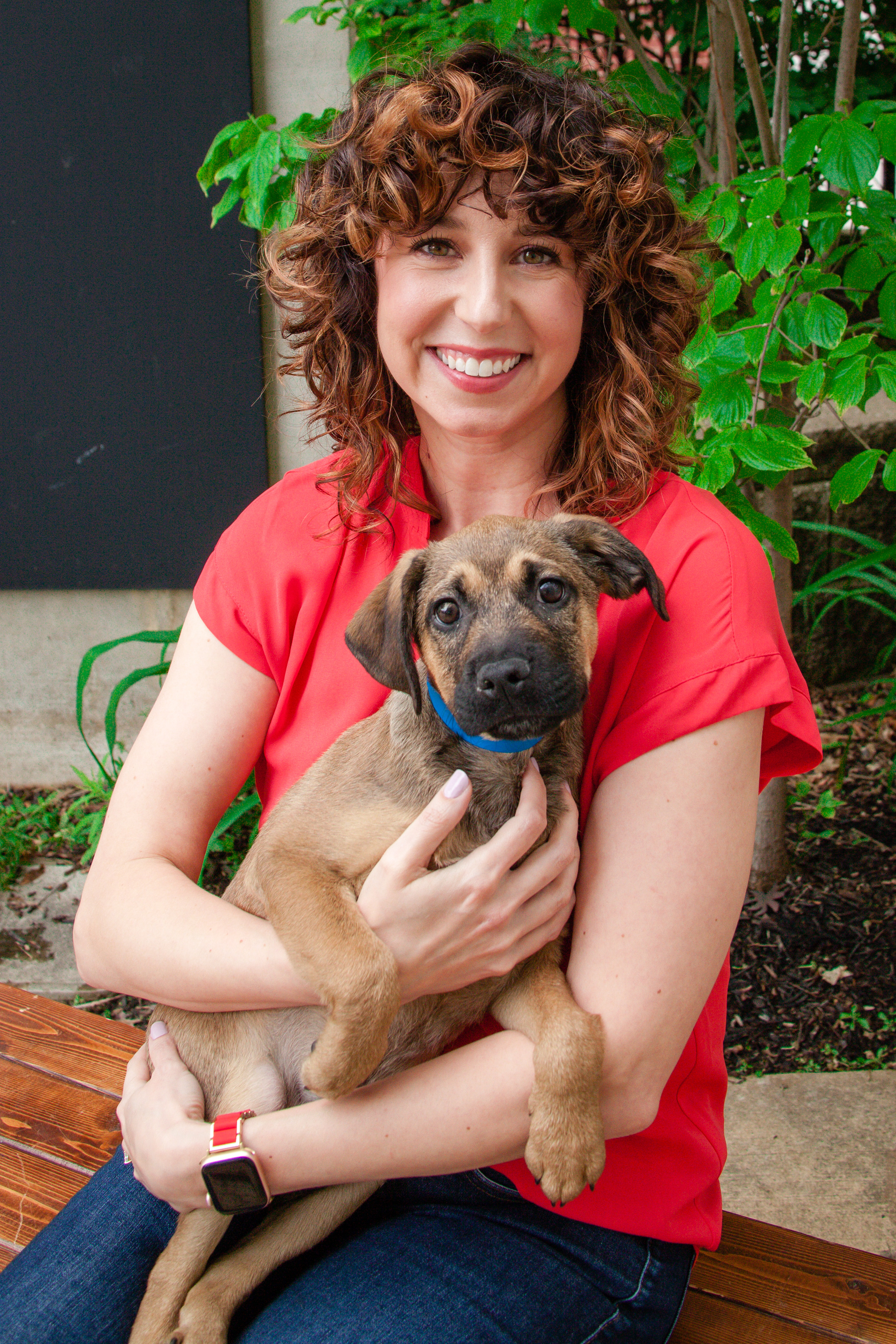
Dr. Annie Valuska, Principal Scientist – Behavior, Global Pet Behavior for Nestle Purina.
Dr. Annie Valuska, Principal Scientist – Behavior, Global Pet Behavior for Nestle Purina joins host Laura Reeves for a deep dive on dog behavior.
“I think even for any animal, (nature vs nurture) is a challenging question,” Valuska said, “but I think for dogs in particular, that might be the muddiest waters out there. Dogs have been domesticated for longer than any other species on earth. They have this long history of kind of co -evolving with us. And as a result, in my opinion, it is now in dogs’ nature to be nurtured by us.
“And so that just really, really blurs the lines. Everybody that loves dogs, you don’t have to be a scientist to know that there’s something really special in that bond. But the science behind it is really cool. And it all started with the domestication.
“So dogs diverged from a common wolf -like ancestor about 15 ,000 years ago,based on the latest science and there’s a lot of evidence that they kind of domesticated themselves. That the friendliest, most outgoing wolves, we’ll call them, were willing to approach people for the benefits that we could provide, mostly food.
“And then those wolves produced more offspring. They survived longer. They had higher fitness and evolutionary terms. They reduced offspring that were also friendly, tame, curious, approachable. And then over generations, we’ve ended up with the dogs that we know and love today.
“And while there are several differences between dogs and wolves, most of the big ones are really defined by the fact that dogs have this relationship with humans. They have, for example, changes in their digestive system that allow them to digest carbohydrates much more effectively than wolves can. They have changes in the muscles around their eyes that allow them to make that puppy-dog-eye expression and show the whites of their eyes that we respond really strongly to.
“So they kind of hijacked that in us. And one of the coolest changes in my opinion is that dogs are so much better just naturally at paying attention to and responding to what we’re doing. So things like where we’re looking, they will respond to our pointing gestures by going to where we’re pointing. They do this pretty much innately. Puppies are kind of made to respond to people.
“Wolves just can’t do that, even when they are raised and socialized exactly like the dogs are in these studies. And so that certainly speaks to something about the DNA. The genetic changes, what makes a dog a dog, makes them attuned to us and wanting to build that relationship and that bond with us.
“I think of the genetic component as starting the dog somewhere on a spectrum. It’s like dropping that dog on the spectrum from extremely fearful to extremely friendly, their genes are giving them a starting place. I think that the socialization and training that the dog gets throughout their lifetime can absolutely move them on that spectrum.
“Now, a dog that has a genetic background that is resulting in them being on the very far fearful end is probably never ever going to be socialized well enough to get to the very far friendly end. There is a limit to how far on that spectrum they can move from where their genes drop them. But I think there is generally a lot more wiggle room there than many people give credit for.
“And one of the interesting studies on this that came out just a couple years ago in 2022 was looking at breed specific genetic backgrounds. And what that study found was that while the genetics of specific breeds were pretty tightly correlated with physical traits, there was really not much behaviorally, which surprised a lot of people because there are many beliefs that, ‘Oh, Golden Retrievers have this temperament and some of these more ancient breeds have this temperament,’ but there was not much evidence for that in that study. There, in fact, was almost as much variability within a breed as there was between breeds.”
Listen in for the full, in depth, fascinating conversation and join us in promoting Domestic Violence Awareness month with a bonus discussion of the Purple Leash Project.
Dr. Valuska can be followed at @annieknowsanimals on TikTok and Instagram.


